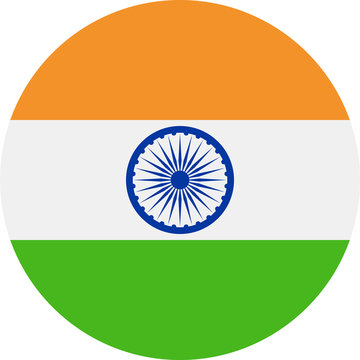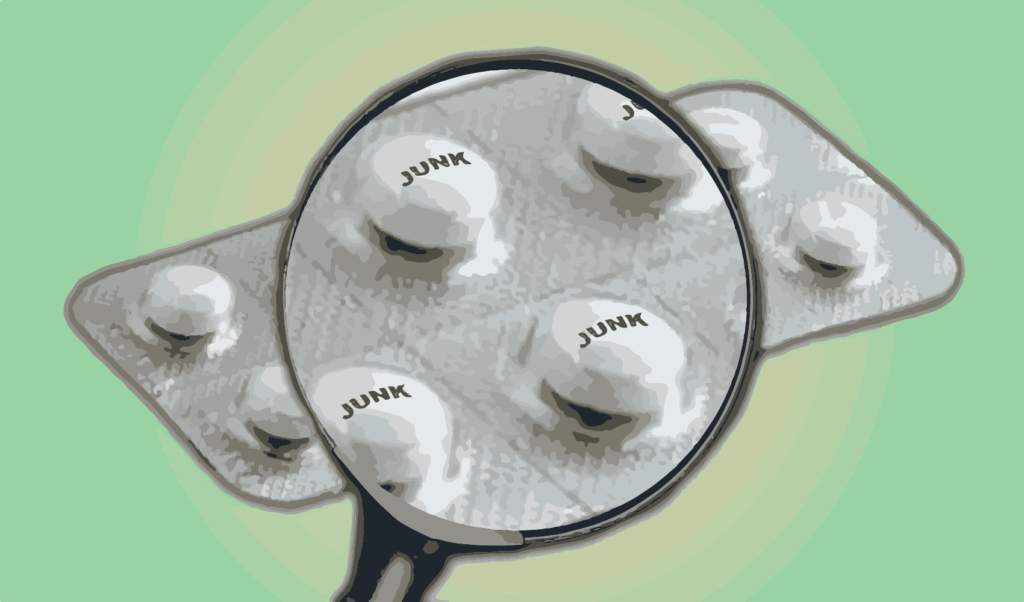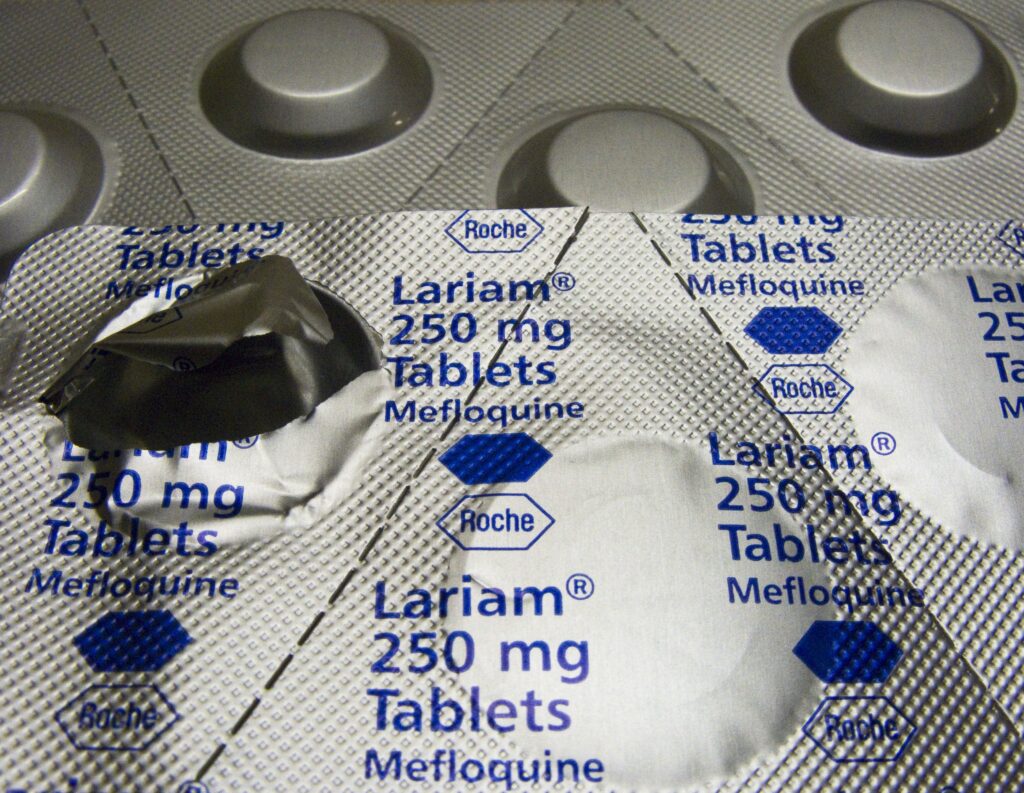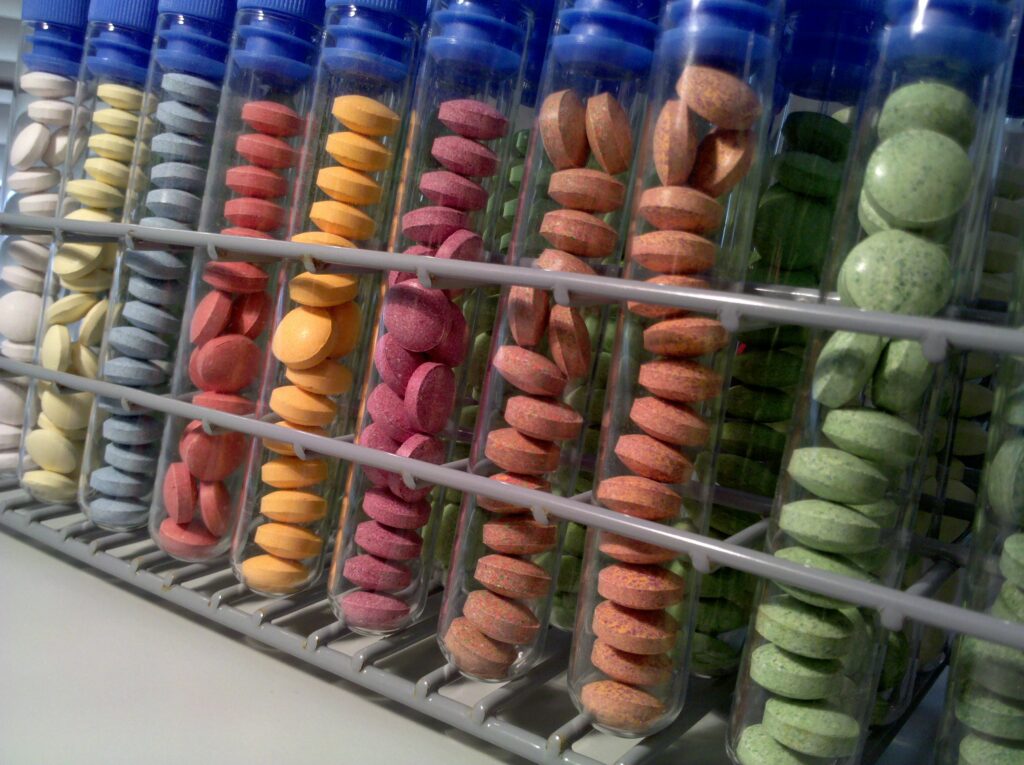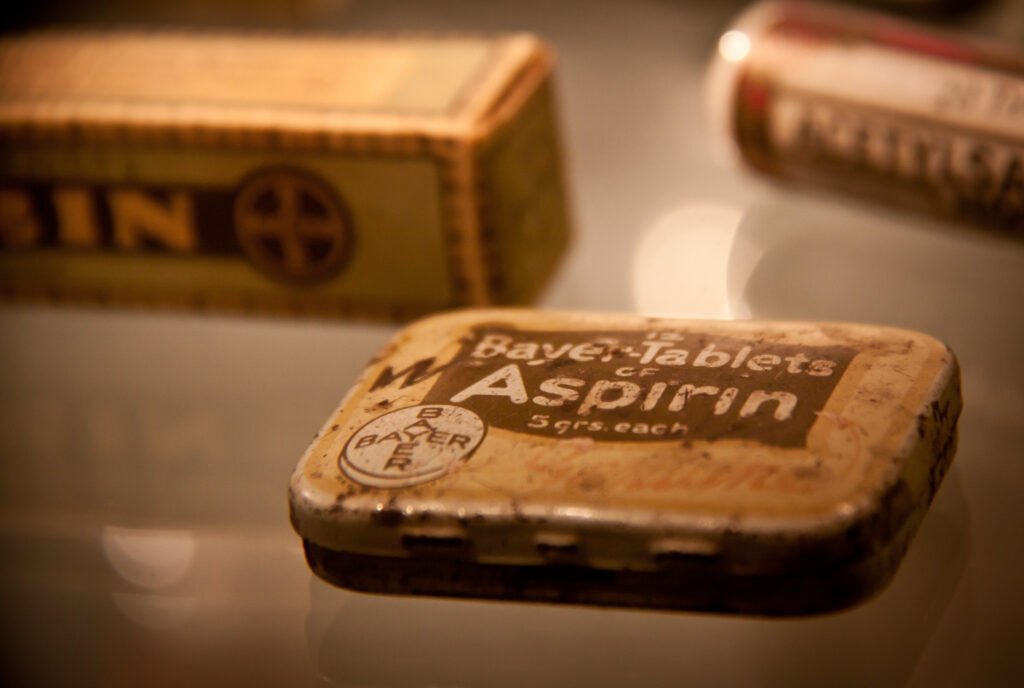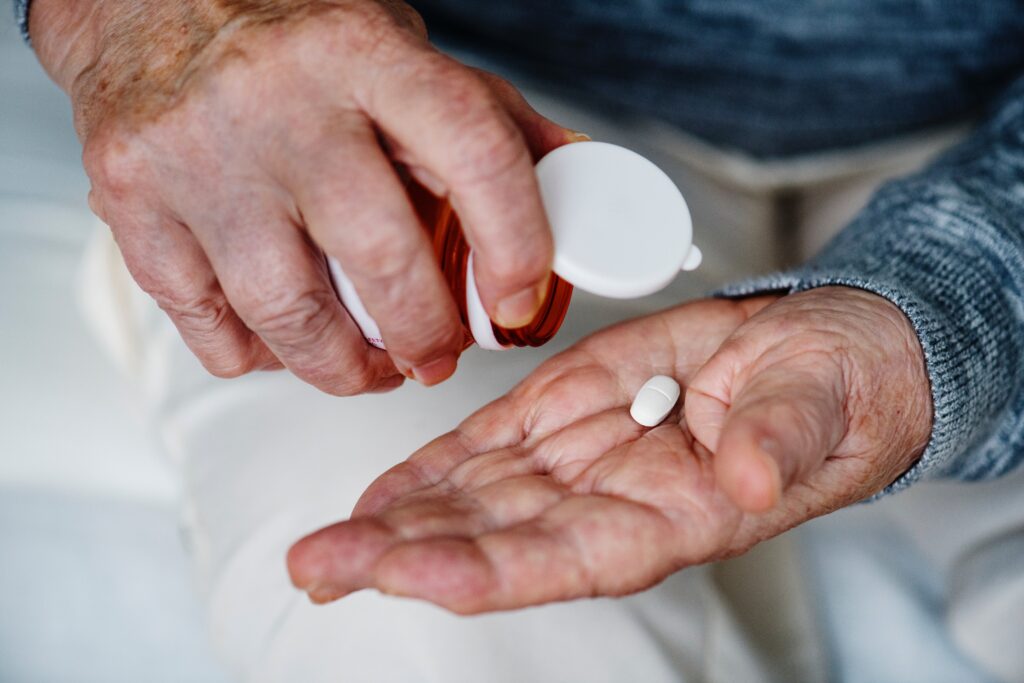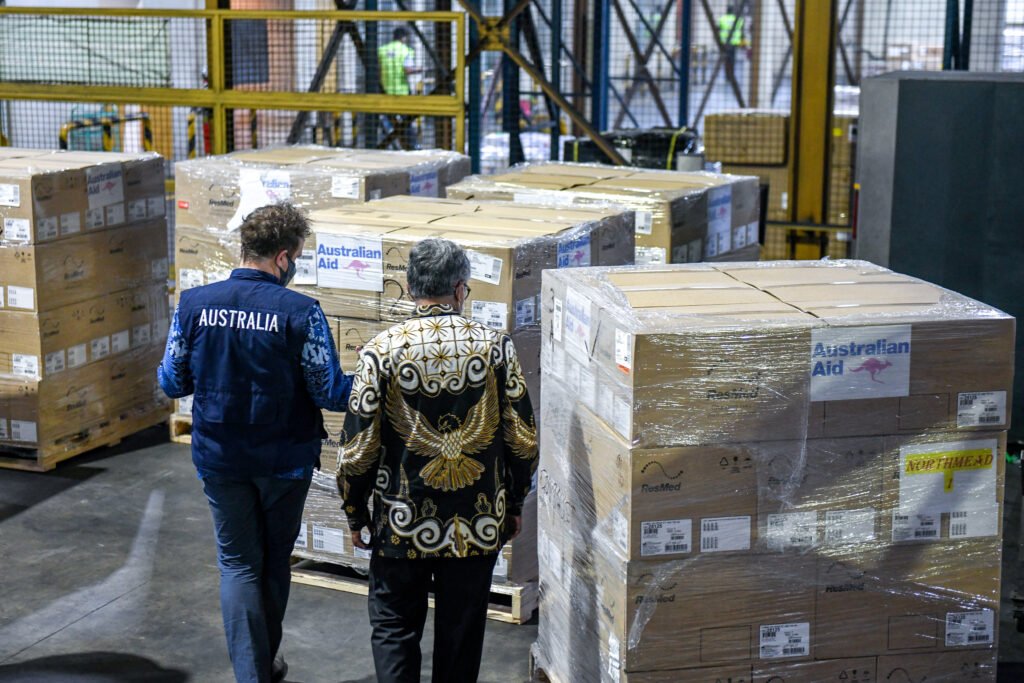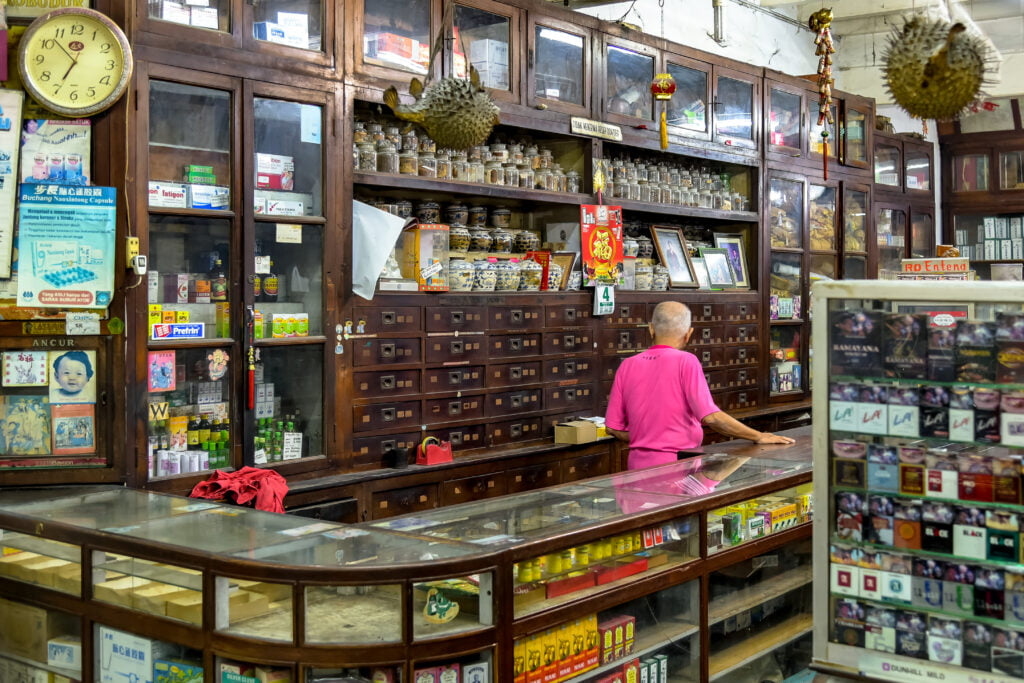The key ingredient in detecting a counterfeit medicine could be in your kitchen.
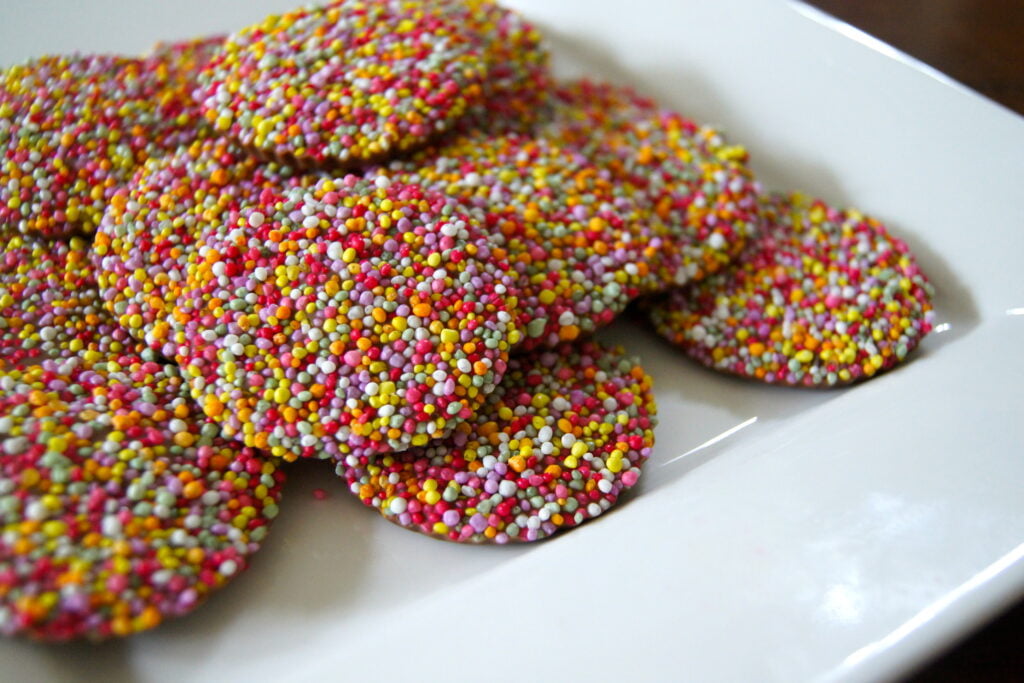 Candy sprinkles (also known as hundreds and thousands, or nonpareils) can be effective drug identifiers. : Nicole/Fickr https://www.flickr.com/photos/28691409@N05/6491435481 CC BY-NC 2.0
Candy sprinkles (also known as hundreds and thousands, or nonpareils) can be effective drug identifiers. : Nicole/Fickr https://www.flickr.com/photos/28691409@N05/6491435481 CC BY-NC 2.0
The key ingredient in detecting a counterfeit medicine could be in your kitchen.
Pantries everywhere could hold the key to identifying fake medicines.
If you’ve ever taken the time to look closely at a chocolate freckle (or nonpareil candy) you will have noticed no two are alike. That same randomness is now being applied to help identify fake medicines.
Adding multi-coloured candy sprinkles at random during the manufacturing process could create distinct patterns and help fight fraudulent products. Unlike Mary Poppins’ spoonful of sugar to help the medicine go down, this spoonful of sugar could prevent people from taking medicines that might harm them.
Fake or substandard medicines often seem to be the genuine article, but they may not have the right active ingredients, or they could contain potentially harmful additives. The problem costs about US$200 million every year, and affects around one in every 10 medical products in developing economies, according to the World Health Organization.
A recent study at the University of California shows candy sprinkles (also known as hundreds and thousands, or nonpareils) can be effective drug identifiers, as they create unique patterns when randomly affixed to a pill or capsule during the production process. These patterns are easy to make but difficult and time-consuming to duplicate, which makes them useful for proving the authenticity of a medication.

These on-pill patterns — dubbed “CandyCodes”— would be a permanent part of the drug from manufacturing all the way to the consumer. The CandyCode pattern on each pill would be photographed before leaving the manufacturer and the photos stored in a searchable database of known-good pills. A consumer could then simply photograph their pill with their camera phone and upload the image to the manufacturer’s website, which would search for a matching CandyCode in the database. No match would mean the drug had not been produced by that manufacturer and the quality is not guaranteed.
The study showed that a drug manufacturer could produce at least 100,000,000,000,000,000 (100 quadrillion) CandyCoded pills — about 40 million for every person on earth — and still be able to uniquely identify each CandyCode and confirm the authenticity of each pill.
The experiment to test the effectiveness of CandyCodes used edible adhesive to attach candy sprinkles to acetaminophen/paracetamol caplets. Commercially produced chocolate freckles were also used as convenient substitutes for large-scale manufactured CandyCoded medicines, as they are inexpensive, already mass produced and roughly the same size as pills and capsules. The study also included computer simulations of much larger numbers of CandyCodes.
It found computer algorithms can be used to convert a photo of a CandyCode into binary data for more efficient storage and searching in a database. Unlike traditional barcodes, which have regularly spaced lines or grids of pixels that help with decoding the information they contain, CandyCode sprinkles are placed at random on each pill and have no well-defined structure. The algorithms developed in the study take advantage of the tendency of sprinkles to pack together into hexagons on the surface of a pill. And by converting the order of the colours of the sprinkles in each hexagon into binary data, the algorithms can store each CandyCode in a conventional database.
Unlike existing anti-counterfeiting techniques, CandyCodes require minimal modifications of the existing manufacturing process and no specialised equipment to read their patterns. Since many manufacturers already take photographs of their products for quality-control purposes, obtaining CandyCodes from these existing photographs should also require minimal extra effort.
Other researchers have proposed various medicine identifiers, but many have shortcomings that stop them being widely used. For example, a suggestion to mark a drug capsule’s surface with encoded ID requires a specialised reader. Another technique requires printing a unique QR code on each pill, but reading the code requires a microscope. Printing IDs on film-based formulations of a product, and using fluorescent ink or mouldings for on-pill QR codes that could be read by smartphones, have also been suggested, but these all require significant changes to the manufacturing process.
But more work needs to be done before CandyCodes can be widely rolled out on pharmaceuticals. For example, to avoid adding sugar (and calories) to a medication, CandyCodes may need to be developed that use edible colored particles that do not contain sugar. Also, since different regions have different regulations on food colourants, the colours used in CandyCodes must be approved for food and drug use in all relevant markets.

CandyCodes will also need to maintain their integrity once shipped from the manufacturers. Sprinkles that are not firmly attached could fall off during shipping and distribution, creating problems if the pills’ appearance no longer matches the images on file. The study tested this by tumbling a bottle containing CandyCoded medications nonstop for one week (after which the CandyCodes were still decodable), but testing under additional conditions is needed.
The principle behind CandyCodes could be used to authenticate more than just pharmaceuticals. In 2019 alone, the US Customs and Border Protection Agency confiscated over US$1.5 billion worth of counterfeit cosmetics, perfumes, wine, spirits, apparel, accessories and other high-value goods. Legitimate manufacturers of these goods could protect their genuine products by applying a drop of glue to a bottlecap or tag and then dusting the glue with multicoloured particles or glitter, forming a unique CandyCode-like identifier on the product.
William H. Grover is an Associate Professor in the Department of Bioengineering at the University of California, Riverside.
The original research described in this article was supported by a grant from the Bill and Melinda Gates Foundation (OPP1191214). The author declares no conflict of interest.
Originally published under Creative Commons by 360info™.


